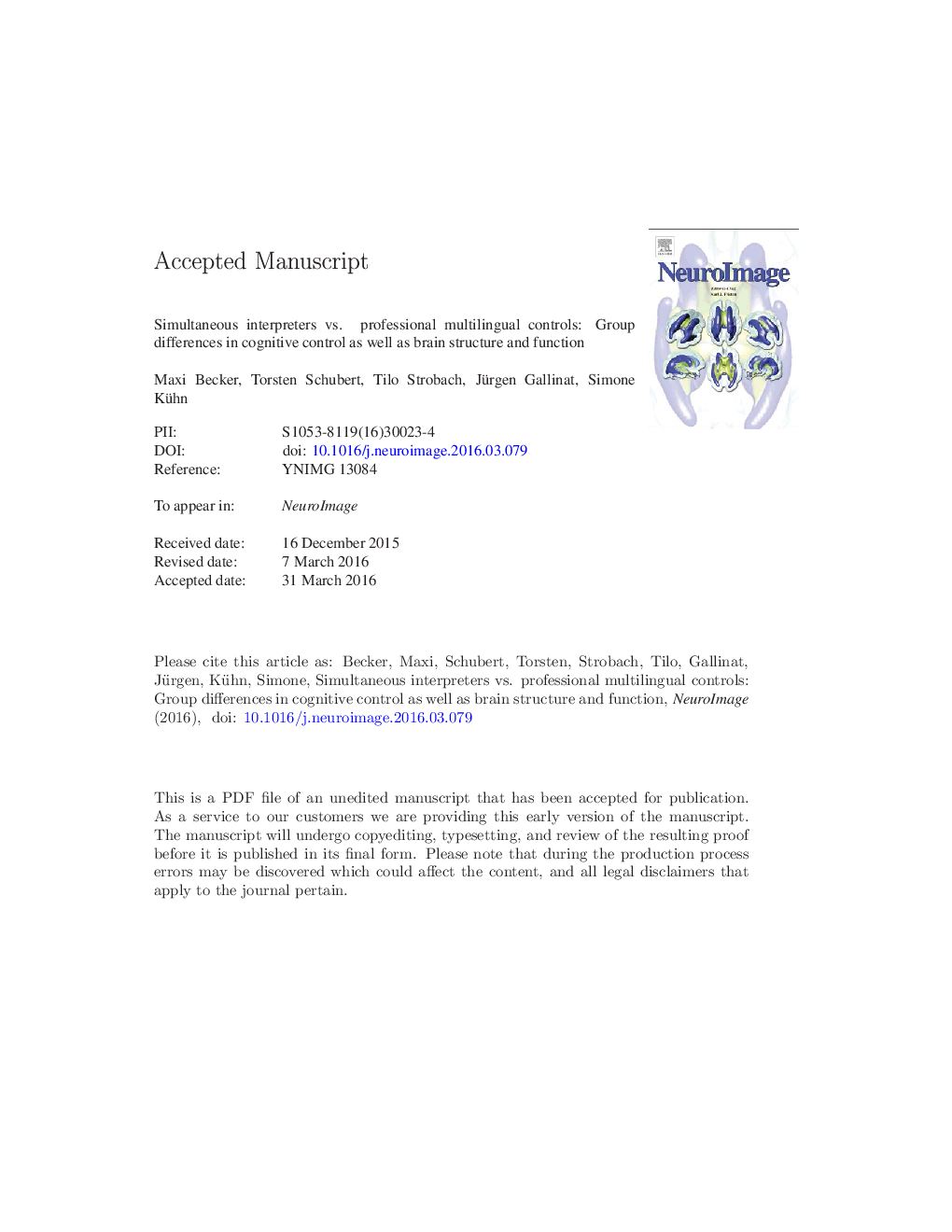| Article ID | Journal | Published Year | Pages | File Type |
|---|---|---|---|---|
| 6023311 | NeuroImage | 2016 | 37 Pages |
Abstract
There is a vast amount of literature indicating that multiple language expertise leads to positive transfer effects onto other non-language cognitive domains possibly due to enhanced cognitive control. However, there is hardly any evidence about underlying mechanisms on how complex behavior like simultaneous interpreting benefits cognitive functioning in other non-language domains. Therefore, we investigated whether simultaneous interpreters (SIs) exhibit cognitive benefits in tasks measuring aspects of cognitive control compared to a professional multilingual control group. We furthermore investigated in how far potential cognitive benefits are related to brain structure (using voxel-based morphometry) and function (using regions-of-interest-based functional connectivity and graph-analytical measures on low-frequency BOLD signals in resting-state brain data). Concerning cognitive control, the results reveal that SIs exhibit less mixing costs in a task switching paradigm and a dual-task advantage compared to professional multilingual controls. In addition, SIs show more gray matter volume in the left frontal pole (BA 10) compared to controls. Graph theoretical analyses revealed that this region exhibits higher network values for global efficiency and degree and is functionally more strongly connected to the left inferior frontal gyrus and middle temporal gyrus in SIs compared to controls. Thus, the data provide evidence that SIs possess cognitive benefits in tasks measuring cognitive control. It is discussed in how far the central role of the left frontal pole and its stronger functional connectivity to the left inferior frontal gyrus represents a correlate of the neural mechanisms for the observed behavioral effects.
Keywords
Related Topics
Life Sciences
Neuroscience
Cognitive Neuroscience
Authors
Maxi Becker, Torsten Schubert, Tilo Strobach, Jürgen Gallinat, Simone Kühn,
